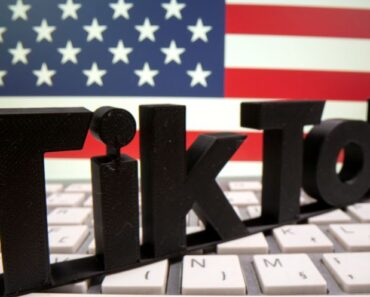This post was originally published on this site
 © Reuters. A passerby walks past an electronic boards Japan’s Nikkei average, the Dow Jones Industrial Average and foreign exchange rates outside a brokerage in Tokyo
© Reuters. A passerby walks past an electronic boards Japan’s Nikkei average, the Dow Jones Industrial Average and foreign exchange rates outside a brokerage in TokyoBy Tom Westbrook
SYDNEY (Reuters) – Asian shares gained on Tuesday, but a lack of detail about the Sino-U.S. trade deal tempered some of the exuberance that sent Wall Street to record highs overnight, while familiar fears of a hard Brexit knocked the pound.
Graphic: Asian stock markets – https://product.datastream.com/dscharting/gateway.aspx?guid=516bc8cb-b44e-4346-bce3-06590d8e396b&action=REFRESH
MSCI’s broadest index of Asia-Pacific shares outside Japan () rose 0.1%. Japan’s Nikkei () rose half a percent to its highest in more than year. Australia’s S&P/ASX 200 () eked a tiny extension to Monday’s big gains.
Bond markets, currencies and commodities were more circumspect than equities, and movements were slight.
“Everyone expected the U.S. was never going to put the new tariffs on, it was hurting them as much as anyone else,” said Mathan Somasundaram, portfolio strategist at stockbroker Blue Ocean Equities in Sydney. “But markets are fairly stretched, we need to have better data to drive growth optimism.”
The preliminary deal between Washington and Beijing will double U.S. exports to China, White House adviser Larry Kudlow told Fox News overnight. The United States will also reduce some tariffs on Chinese goods under the agreement.
It is not yet signed, and the Chinese side have been more circumspect in their praise, but U.S. Trade Representative Robert Lighthizer said over the weekend it is “totally done”.
The three major U.S. stock indices rose modestly, but posted record closing highs. So did the pan-European STOXX 600 index (). [.N][.EU]
The Dow Jones Industrial Average () rose 0.4%, the S&P 500 () added 0.7% and the Nasdaq () almost one percentage point. For the year to date, the Nasdaq has increased its value by a third, while the other indices are up by more than 20%.
In Britain, the FTSE 100 () had its biggest daily gain in almost a year. But after the closing bell some familiar fears returned.
ITV (LON:) reported Prime Minister Boris Johnson would use his huge majority to reinstate a hard deadline for quitting the European Union at the end of next year, again raising the specter of a chaotic “hard” Brexit.
Sterling fell 0.6%.
WHAT’S ACTUALLY IN IT?
Elsewhere currency markets were more circumspect in the absence of many of the fine details of the trade deal. The U.S dollar recouped some of Monday’s losses, though moves were modest.
“Well, yeah, they’ve agreed a phase one deal, but what’s actually in it?” said Westpac analyst Imre Speizer.
“Equity markets just want to rally, so they’ll pick on anything that seems remotely positive, but the other markets are maybe a little more thoughtful about exactly what’s going on.”
Several Chinese officials told Reuters the wording of the agreement remained a delicate issue and care was needed to ensure expressions used in text did not re-escalate tensions.
Still, trade optimism kept the on the strong side of 7 per dollar .
The Australian dollar drifted lower ahead of the release of central bank meeting minutes that will provide clues as to the thinking about further monetary easing in 2020.
Brent crude () held steady at $65.29 per barrel, after climbing overnight. was flat at $1,475.32 per ounce.


